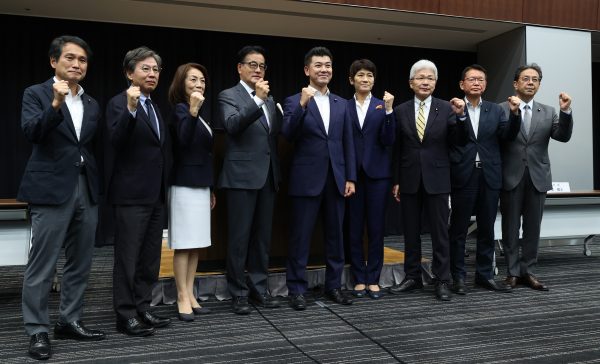A record 181 female candidates ran for office in the upper house election, accounting for 33 per cent of all candidates who ran. This new record came very close to the government’s 35 per cent target by 2025 as part of the Fifth Basic Plan for Gender Equality. Female candidates subsequently won 28 per cent of the 125 contested seats. This brought the total number of female lawmakers, including those whose seats were uncontested in this election, to a new high of 64.
Candidate selection, including the decision to put forward a female lawmaker, is based on political considerations and party ideology in Japan. The Japan Communist Party (JCP) has a long history of supporting women candidates and nominated the highest proportion of female candidates (55 per cent). The Constitutional Democratic Party of Japan (CDPJ) and the Social Democratic Party (SDP) respectively nominated 51 and 42 per cent.
23 per cent of the conservative ruling Liberal Democratic Party’s (LDP) fielded candidates were female, while junior coalition partner Komeito achieved 21 per cent. Still, the LDP’s female candidates were much more likely to be elected than those from opposition parties. The female candidates elected as a proportion of all female candidates for the LDP was 68 per cent, compared to 6 per cent for the JCP, 35 per cent for the CDPJ and 20 per cent for the SDP.
Japan’s upper house electoral system is much more advantageous for women than the House of Representatives. In this upper house election, Japanese voters cast two ballots — one ballot for the 74-seat multi-member/single-member prefectural electoral districts and another ballot for 50 seats elected through open-list proportional representation.
Multi-member district and proportional representation systems are associated with greater female representation. When one organisation selects multiple candidates in multi-member districts, it has the opportunity to balance its ticket by achieving gender representation. Party-list systems also require a centralised procedure of candidate selection that gives party leaders, rather than local party members, greater flexibility to nominate candidates from diverse backgrounds.
The success of female candidates in the recent upper house election is a positive step. Yet the real challenge faced by Japan’s political parties is to increase the representation of women in the lower house. In the 2021 lower house election, women accounted for 18 per cent of all candidates and 10 per cent of all candidates elected.
The lower house election system is based on a mixed electoral system of single member districts and party-list proportional representation tiers. In the single member districts, party leaders have difficulty endorsing female candidates because they tend to choose the ‘safe’ representative or favour incumbents. Party-list proportional representation tiers are then seen as a secondary chance to win a seat even if candidates lose their single member district race.
In the 2021 Lower House election, 91 per cent of LDP candidates for single member districts were dual candidates and 88 per cent of LDP incumbents were successfully elected. But women accounted for only 8 per cent of these LDP incumbents.
One of the supply side barriers to female representation is that women are considered by some to lack the sanban (three key factors) — campaign organisation, name recognition and some sort of fundraising apparatus — to be selected as candidates. Their perceived lack of these electoral assets means that women are less likely to be selected as candidates or as challengers to other party members in lower house elections.
To solve this problem, 60 countries have adopted voluntary quotas for individual parties to put in place to increase female representation. After Japan’s Act on the Promotion of Gender Equality in the Political Field was unanimously passed in May 2018, the CDPJ, the JCP and the SDP each set a 50 per cent target for female candidates. But the LDP has not set voluntary targets, sidestepping calls for change by stating that its headquarters had asked local organisations to proactively field women.
The good news is on the demand side. Some point to Japan’s deeply patriarchal institutions and attitudes when explaining the poor representation of women in Japanese politics. But according to the World Values Survey, the beliefs that Japanese voters hold on men’s suitability for leadership positions have substantially weakened from 1995 to 2020. The positive perception of men in leadership positions dropped significantly from 60 per cent in 1995 to 25 per cent in 2020.
This cultural shift reduces the degree to which the gender gap in political representation can be explained by voter preferences. Japan’s political system and the unwillingness of parties to field and support female candidates are to blame. If Japan is to increase the political representation of women, it will require reform at the structural level — not just a shift in culture.
Yasuo Takao is an Adjunct Senior Research Fellow at the School of Media, Culture and Creative Arts, Curtin University, Perth.

